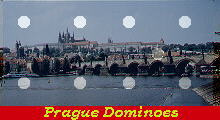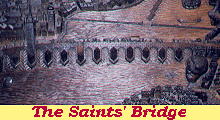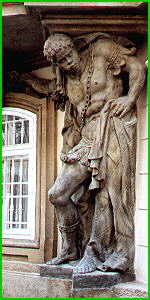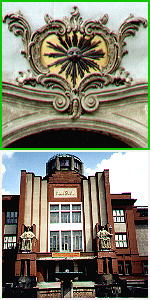  What's New! Detailed Sitemap All images © by Roberto Piperno, owner of the domain. Write to romapip@quipo.it. Text edited by Rosamie Moore. |
 (green border) (green border)
Baroque Doors in Prague
Baroque was introduced in Prague after 1620 mainly by the Jesuits who built in Prague
and elsewhere in Bohemia many churches, schools, hospitals which followed the pattern of the similar
buildings the Jesuits had in Rome. The use of curved lines and stucco decorations soon became a common
feature of all buildings, including relatively small houses. This style lasted until the end of the XVIIIth century.
The images show (left to right): Detail of Morzinzky Palace designed by J. B. Santini Aichel (1713-14) in Nerudova street - Mala Strana - Prague Detail of the side entrance to St John Nemopuk's in Kutna Hora and detail of the City Theatre by Antonin Balsanek (1906-09) in Pardubice Detail of a building in Stare Mesto - Prague and Museum by Jan Kotera (1909-12) in Hradec Kralove Detail of a building in Mala Strana - Prague and detail of the fašade of Nanebevzeti Panne Marie by J. B. Santini Aichel (1702-07) in Kutna Hora The background of this page shows the entrance to Loreta by Johann Georg Aichbauer (1734) in Hradcany - Prague Find the other domino pieces: St John Nemopuk (with another image of a Baroque door) Towers (with another image of a Baroque door) Baroque Windows (with another image of a Baroque door) Secese Art Early Cubism Great Architects See  and and  |



